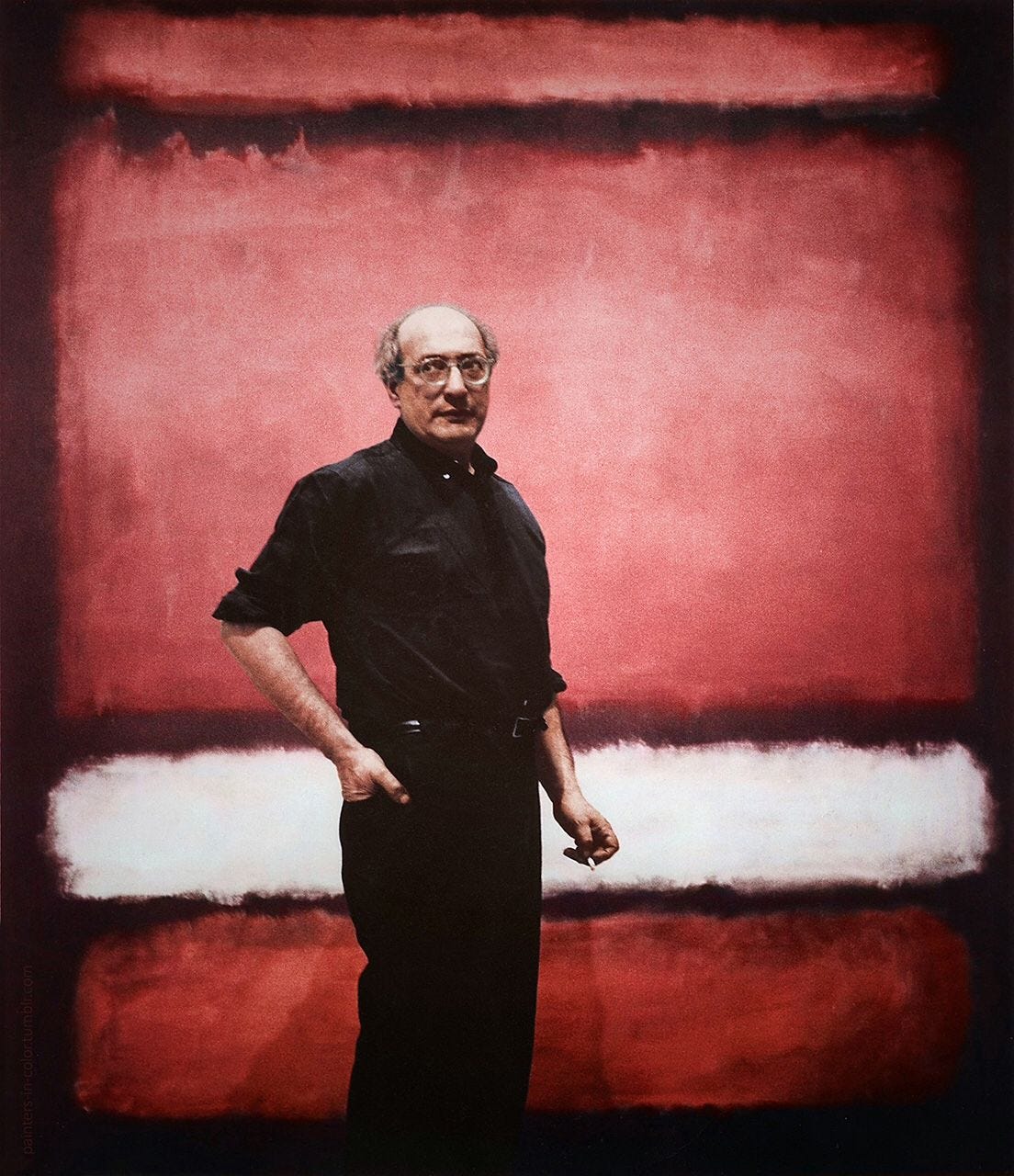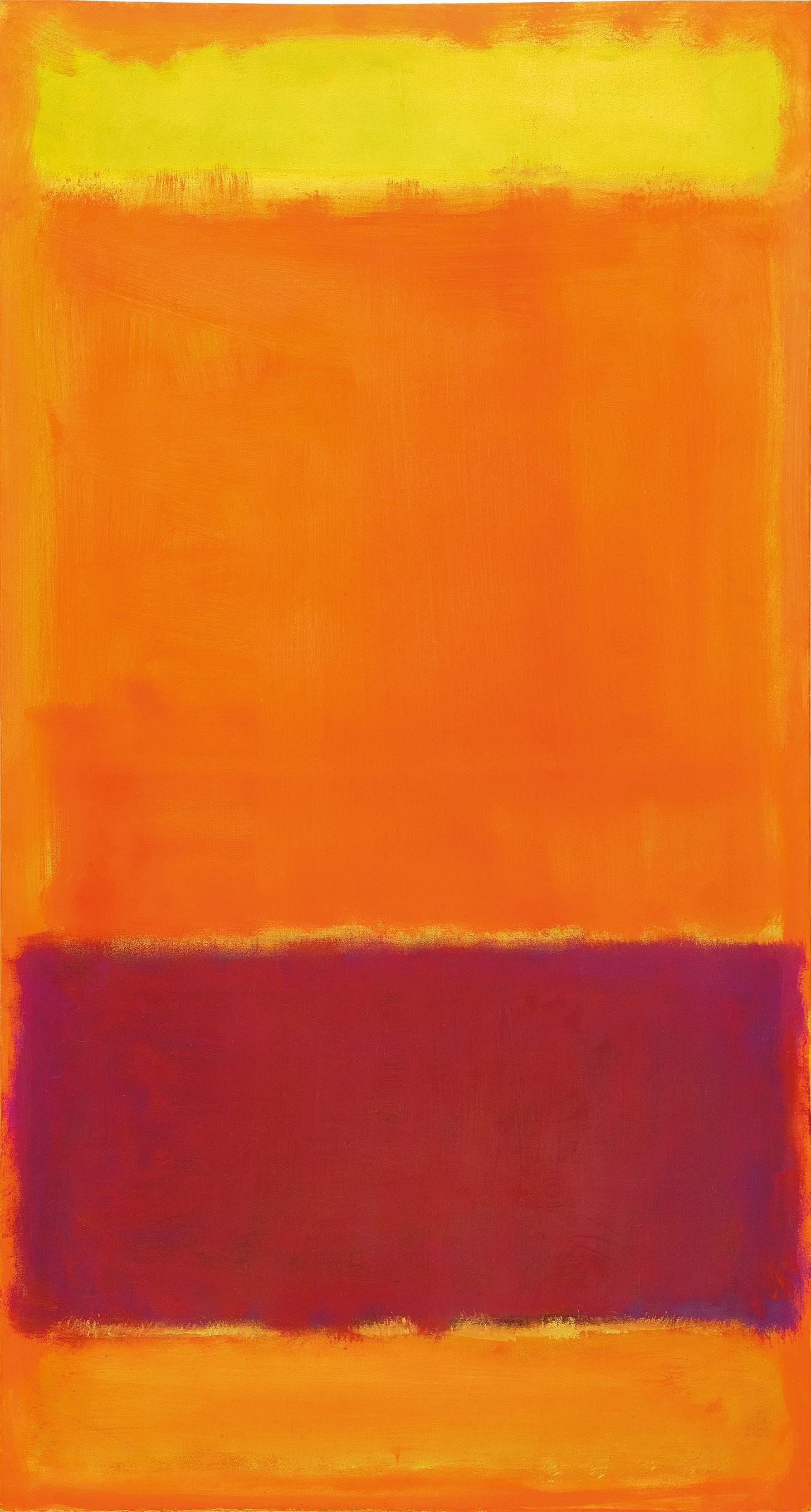Loneliness is a pervasive human experience, one that transcends cultural, geographical, and temporal boundaries. It is an emotional state that often eludes easy articulation but finds a unique expression in the art of Mark Rothko. Rothko, an influential abstract expressionist painter of the mid-20th century, created works that go beyond the canvas, delving into the complex realm of emotions, including the profound sense of isolation.
Mark Rothko's artistic journey was marked by a departure from representational art to abstraction, a shift that allowed him to explore the depths of human emotion and, notably, loneliness. His iconic color field paintings, characterized by large expanses of color, evoke a contemplative atmosphere that resonates with the viewer on a deeply emotional level.
One of Rothko's masterpieces, "No. 61 (Rust and Blue)," is a testament to his ability to convey the profound experience of loneliness through the language of color and form. The painting, dominated by a vast expanse of somber hues, invites viewers into an immersive space where the boundaries between the self and the canvas blur. The intensity of the colors, the gradation of tones, and the absence of defined shapes create an emotional landscape that mirrors the internal solitude many individuals grapple with.
Loneliness, in Rothko's works, becomes a visual dialogue that transcends words. The absence of discernible figures or narratives in his paintings allows viewers to project their own emotions onto the canvas. It becomes a mirror reflecting not only the artist's introspections but also the loneliness harbored within the observer. Rothko's art acts as a vessel for shared human experiences, providing a space where individuals can confront and contemplate their own solitude.
Rothko himself once stated, "I'm not an abstractionist. I'm not interested in relationships of color or form or anything else. I'm interested only in expressing basic human emotions: tragedy, ecstasy, doom, and so on." In this pursuit of conveying fundamental emotions, Rothko's paintings serve as a powerful means of communication, transcending the limits of language and reaching the core of human existence.
The interplay of colors in Rothko's compositions mirrors the complexity of loneliness. From the vibrant and intense to the muted and desolate, his palette becomes a language through which he communicates the varied shades of isolation. The juxtaposition of colors suggests a nuanced emotional journey, one that resonates with the multifaceted nature of loneliness – sometimes vibrant and overwhelming, at other times subdued and haunting.
Mark Rothko's art offers a profound exploration of loneliness, transforming the canvas into a space where emotions are not only depicted but shared. His color field paintings serve as a visual medium through which viewers can confront their own feelings of isolation, finding solace in the shared human experience. Rothko's legacy lies not only in his mastery of abstract expressionism but also in his ability to turn loneliness into a universal language, creating a bridge that connects individuals through the shared canvas of human emotion.
Mark Rothko, born Marcus Yakovlevich Rothkowitz on September 25, 1903, in Dvinsk (now Daugavpils), Latvia, was a renowned American abstract expressionist painter. His family immigrated to the United States when he was ten, settling in Portland, Oregon. Rothko showed early artistic promise, leading him to pursue studies in art, first at Yale University and later at the Art Students League in New York City.
Rothko's early artistic endeavors were influenced by a range of styles, from the figurative to the surrealist. However, his pivotal moment came in the mid-1940s when he, along with other artists like Jackson Pollock and Willem de Kooning, became a central figure in the abstract expressionist movement. This marked a significant departure from his earlier work, as he embraced abstraction as a means of conveying universal human emotions.
Known for his iconic color field paintings, Rothko's art became characterized by large, immersive canvases dominated by blocks of intense color. His unique approach to abstraction sought to evoke profound emotional responses, often exploring themes of tragedy, ecstasy, and existential contemplation. The absence of recognizable figures in his paintings allowed viewers to engage directly with the emotional intensity of his work.
Rothko's artistic journey was marked by an evolution in style, from early surrealist influences to the mature, introspective color field paintings he is most celebrated for. Despite the seemingly simple composition of his works, Rothko invested deep intellectual and emotional consideration into each piece.
Tragically, Mark Rothko's life came to a premature end on February 25, 1970, when he took his own life in his New York studio. His legacy, however, endures through his contributions to the abstract expressionist movement and his profound impact on the art world. The Rothko Chapel in Houston, Texas, dedicated to his works and his philosophy of transcendent human experience through art, stands as a testament to the enduring influence of this visionary artist.






Thank you, Matt. A genuinely interesting essay!
Timely for me, LRB resonates with my reading, thinking about emotions as the essence of what human beings are. Thank you for delving into Rust and Blue and more!